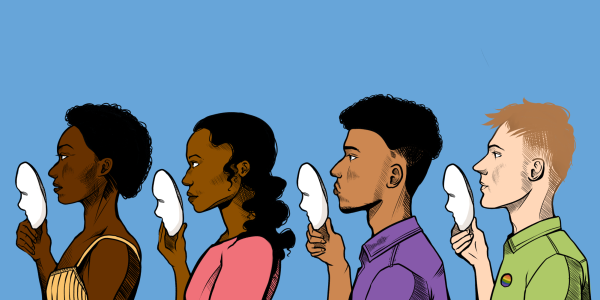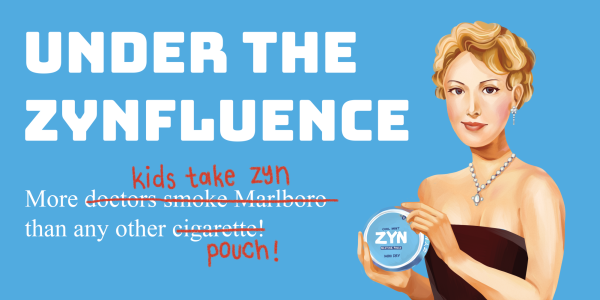Lessons in Representation
During Black History Month, students and faculty discuss the importance of highlighting the Black experience in the school curriculum.
Printed with Permission of Ryann Castanon-Hill
Celebrating Black History Month with “Expectations” by Ryann Castanon-Hill ’23
February 8, 2023
The school’s celebration of Black History Month in 2023 marks almost four years since the administration adopted its Anti-Racism Plan in response to student demand for anti-racist action in the 2019 school year. The plan was devised to bolster diversity, equity and inclusion (DEI) work, reevaluate curriculum and create more educational opportunities, according to the administration’s 2020 announcement. Since then, DEI has become a priority iniative for the school. It now has a Diversity Council made up of Department Heads and 14 student affinity groups that hold “lunch and learn” discussions and mandatory DEI curriculum planning for each department.
Black Leadership Awareness and Culture Club (BLACC) Communications Leader Hunter Bridgett ’24 said she recognizes administrative efforts to incorporate more diversity in schoolwork but believes there needs to be a shift in the school community’s perception of these initiatives.
“This school is so diverse, and there are so many perspectives we need to highlight,” Bridgett said. “Of course, we want more representation across the board, but right now, [with] what the school has done, there’s obviously a lot of progress that has been made. It’s not that the curriculum needs to change right now, it’s the attitude of the student body and the teachers when confronting that curriculum. It’s not just something that everyone needs to ‘get done’ and just move on [from], it’s realizing the importance of Black perspectives and any other perspectives.”
Bridgett said efforts of teachers to stick to this plan of representation often seem forced and would be more impactful if the reasoning for more inclusivity was explained.
“It’s obvious that the school has implemented some sort of plan, because in every subject you can definitely see at the very minimum forced diversity that they have to incorporate in their lesson plan,” Bridgett said. “It works best for the teacher when we understand the importance of sharing a diverse curriculum and when we teach why it’s important. Kids may not understand why we’re highlighting these experiences, and the Black authors we address in English and History classes, but it’s important for the teachers to make a point of saying that [students] need to learn from diverse perspectives. That’s how they are going to be best accepted by the student body, when [students] realize there’s a ‘why’ behind it, and it’s not just more busy work.”
Bridgett said she sees work being done to make the school community more inclusive but also feels there are things that still seem exclusionary.
“[People] are always trying, but there are aspects of school that don’t feel inclusive,” Bridgett said. “That can be just like socially, it could be in your mind, it can be passive aggressive, but that’s harder to point out. There’s a large progress push by the faculty for [inclusivity], at least in the schoolwork aspect.”
Student Leaders for Inclusion, Diversity, and Equity (SLIDE) member and BLACC Leader Hannah Messaye ’23 said she would like to see more diversity in faculty and staff to help students of color adjust and feel more at ease.
“It’s important that students find someone that at face value can connect with them, whether that’s having a Black teacher or having an Asian teacher, or whatever else, in any class,” Messaye said. “Having that connection in general can make it easier for students, especially those who are struggling and those who are minorities, to often times feel more comfortable. There’s just this perception around teachers and minority students, and these students feeling some sort of way about going to teachers, and that can be mitigated just by having more diverse staffing.”
Messaye said that having a teacher of color helped her build relationships that improved her academic experience.
“It’s really cool to see how having teachers of color can be really beneficial, because in ninth grade, I had [History Teacher Lauryn Nichols] as my history teacher, my first year here, and to this day, she’s one of my favorite teachers,” Messaye said. “I took two of her elective classes in 11th grade, and she wrote my college recommendation. That immediate connection that you can feel with teachers is really important and can really be emphasized even more when you have those teachers of color and minorities in general.”
Head of Diversity, Equity and Inclusion Janine Jones said that she has seen growth in Black representation in the school’s faculty.
“We’ve grown substantially in the number of Black teachers that we’ve had here at Harvard-Westlake,” Jones said. “Since I have a daughter who graduated in 2018, I know when she was here in 2012, we may have had one Black teacher. Now, we are well above just one Black teacher on staff.”
Jones said that the hiring process now also includes an evaluation of a candidate’s interest in including DEI within their teaching.
“For teachers that come into Harvard-Westlake, it used to be that people would be hired and we wouldn’t ask them questions about curriculum about DEI specifically,” Jones said. “Now we ask every single person who’s hired by Harvard-Westlake some sort of DEI question as part of their process, and we’re really looking for people who, at least at a bare minimum, have a willingness to understand it’s important.”
Jones said the school makes many efforts to specifically better understand the Black experience.
“We try to have broad initiatives in the DEI office that will be applicable to numerous members of our community, but we also know groups can get ignored and lost if we are also not having specific attention paid to particular groups and trying to meet their unique needs,” Jones said. “So [there’s] a lot of surveying and understanding how different members of the community are feeling by each demographic, because that’s not something that we’ve always done, not only by putting a survey out there, but then disaggregating the survey results by demographic is critically important for us and having people on staff who understand the Black experience and who have the skill set to support Black students.”
In 2021, almost a year after the implementation of the school’s Anti-Racism Plan, former New York Times Journalist Bari Weiss released an article in City Journal called “The Miseducation of America’s Elites,” criticizing the school’s DEI activism in curriculum and “Wokeism.” The piece detailed a group of school parents under pseudonyms who disapproved of the school’s ways of teaching about race and generally sought to fight these changes. The article referenced an anonymous Instagram account, @wokeathw, allegedly led by these parents, along with students and faculty, with the purpose of “documenting the self-destruction of an elite private school,” according to their account bio.
Since then, Jones said the DEI office has found ways to assess biases in the community. She said she has seen changes in community members’ approaches to diversity. “I see more of a willingness to appreciate and understand difference and to not see difference as a deficit but to see difference as something to be celebrated, acknowledged and recognized,” Jones said. “We are also creating what was formerly known as a bias reporter but is now a Community Concern Reporter for students to report different incidents. What we’re hoping we’ll be able to do with that is not only serve the students who have experienced some sort of harm in our community, but be able to better understand the climate of our community.”
World Languages Teacher Simona Ghirlanda said she has created her own curriculum to prioritize and emphasize DEI education.
“A few years ago, I chose to drop conventional textbooks and created my own virtual sources in order to prioritize DEI within the Advanced Placement French Language and Culture curriculum requirements,” Ghirlanda said. “There is a wealth of authentic video and written sources that allow for reflection on DEI topics in depth.”
Ghirlanda said she feels responsible for educating students to entertain different perspectives to help students grow.
“As an educator and a World Language teacher, I feel that it is my job to highlight this [diversity] in everything I do with my students,” Ghirlanda said. “It is paramount that we pursue encounters with all forms of diversity to understand it and consequently respect and appreciate it. Embracing diversity widens our intellectual horizons and builds our empathy, which makes us better humans.”









































